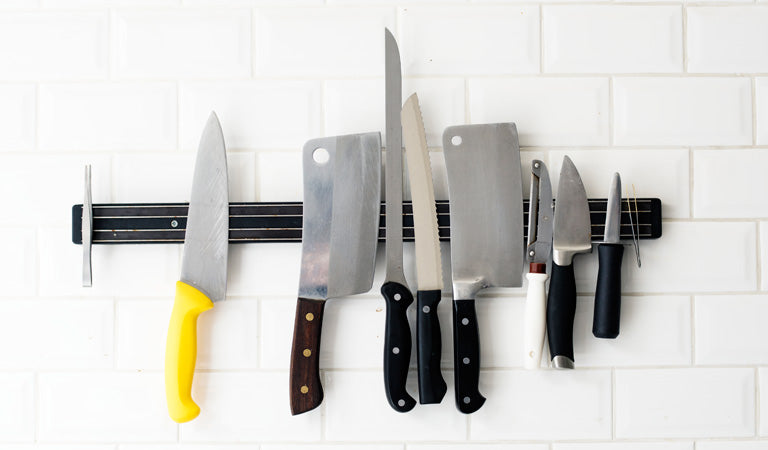Experts ready to help
Experts ready to help

From chopping vegetables to carving meat and everything in between, having the appropriate knife for each task can make a world of difference in your cooking experience. In this buying guide, we will explore a variety of knives, their unique features, and their intended purposes. Whether you're a professional chef or an aspiring home cook, understanding the differences between these knives will empower you to make informed decisions and enhance your culinary skills.

🔪The little helper for control and precision with delicate work
🔪Small and nimble with a pointed tip.
🔪Typically 3-4 inches long with a straight or slightly curved blade.
🔪Ideal for peeling, trimming, and intricate work like removing seeds or creating decorative cuts.

🔪Your go-to, all-purpose kitchen knife
🔪Typically 8-10 inches long with a curved blade.
🔪Allows for a rocking motion when cutting, making it efficient and comfortable.
🔪Ideal for chopping herbs and nuts, slicing and dicing fruits and vegetables

🔪 In between chef knives and paring knives, typically 4-6 inches long with a straight blade
🔪 handles precise tasks with ease.
excels at slicing, trimming, and light-duty work.
🔪 Great for handling smaller fruits, vegetables, and sandwiches with precision.

🔪Made for breaking down large cuts of meat.
🔪Sporting a wide, sturdy blade, it allows for easy separation of meat from bones and precise trimming.
🔪Great for cutting through cartilage and bone

Meat Slicing & Carving Knives:
🔪Effortlessly carve cooked meats into thin, uniform slices.
🔪Perfect for making a beautiful presentation with roasts, turkey, ham, or any large piece of cooked meat..
🔪 Long and slender knives with a thin, narrow blade, typically 8-12 inches long with a pointed tip.

🔪 A large, rectangular blade with a sharp edge and blunt spine
🔪 Designed for chopping through bones, dense vegetables, and tough cuts of meat.
🔪 Used for chopping through bones, dense vegetables, and tough cuts of meat and can be used for smashing garlic cloves or tenderizing meat.

🔪 For intricate deboning and fileting.
🔪 Designed for precise deboning, fileting, and skinning of fish, poultry, and meat.
🔪 Featuring a thin, flexible blade with a pointed tip, it skillfully maneuvers around bones, joints, and skin.
🔪Offers control and maneuverability around bones and joints.

🔪 Ensures clean, even slices for your favorite sandwiches or perfectly toasted bread.
🔪 With a long, narrow blade around 8-10 inches long, it features a saw-like edge that cuts through crusts without squishing the soft interior.
🔪 Perfect for cleanly slicing through bread, bagels, and sandwiches.

🔪 The essential tool for spreading condiments, butter, or spreads onto sandwiches or bread.
🔪 Ensures an even layer without tearing the bread.
🔪 Perfect for achieving the ideal spread-to-bite ratio.
🔪 Small knives with a wide, rounded blade and a blunt tip.

🔪 The expert shuckers for seafood enthusiasts.
🔪 Equipped with a thick, short blade and a pointed tip,
🔪 Designed for safely prying open oyster and clam shells.
🔪 Some models have a curved blade for better leverage and control.

🔪 Thoughtfully designed for cutting and serving various types of cheese.
🔪 Allows for clean cuts and effortless presentation of cheese slices.
🔪 Can have a variety of blade shapes, including forked tips, wide blades, or holes for reduced sticking.